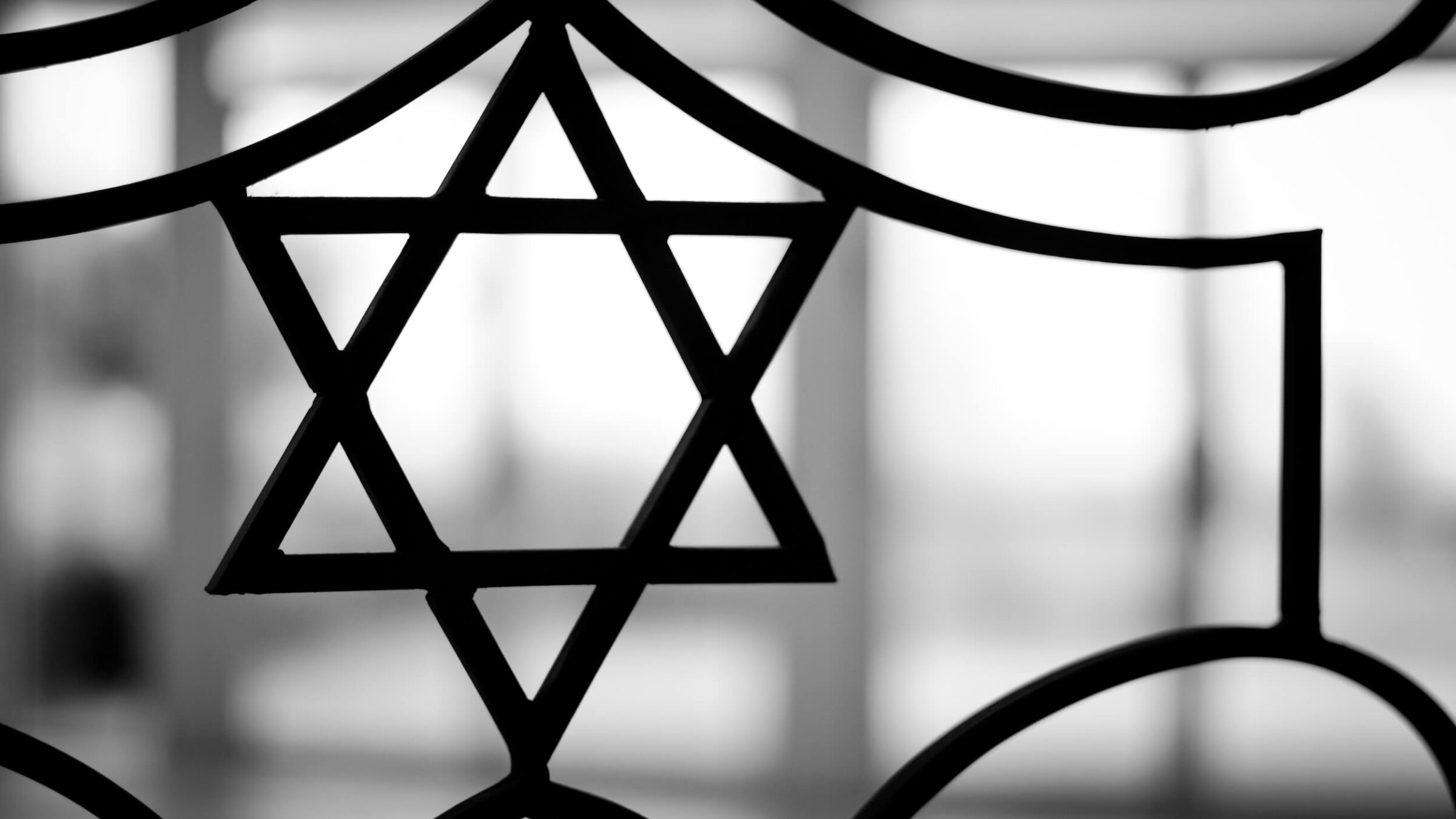Silence your groggers: 6 ideas for Purim pivots in response to the war
A holiday normally associated with revelry needs reimagining this year

Purim tells some troubling stories about conflict and violence —should we change how we tell them amid the Israel-Hamas war? Photo by Montes-Bradley/iStock by Getty Images
Purim celebrates the miracle of Jewish survival in the face of a genocidal threat, which some will undoubtedly read as a particularly inspiring message this year because of Oct. 7. But the ancient story we recount on this holiday also contains a cautionary tale: After killing Haman and his 10 sons, the Jews of Persia kill 75,000 civilians, the ultimate collective punishment.
The entire saga is a fantasy of power not backed by historical evidence. In recent years, we have seen troubling aspects of the story made all too real.
Haman is specifically named as the descendant of Amalek, the eternal national enemy of the Jewish people dating to the days of Moses. In Jewish memory, Amalek represents an enduring existential threat, the idea that throughout history a leader or nation rises up to destroy our people. In the Torah, God commands the Israelites to wipe out the entire nation of Amalek in retribution for Amalek’s attack on the weakest among them.
What’s dangerous about this is the conflation of the attacker with his entire nation.
Now, tragically, Israel’s prime minister, Benjamin Netanyahu, has invoked Amalek in the war against Hamas. “Remember what Amalek did to you,” he said in an official statement on Oct. 28, quoting from Deuteronomy. “We remember and we fight.”
Given that Hamas uses genocidal language against Jews in its charter and has promised to repeat the horrific brutality of Oct. 7 again and again, it is not surprising that many Jews see the group as the embodiment of Amalek. However, by invoking Amalek as the rallying cry for war, Netanyahu was inviting deadly assault on the Palestinian people — not only on the terrorists who perpetrated Oct. 7.
Nearly five months later, more than 30,000 Palestinians have been killed, and we have seen ample evidence that not enough has been done to protect innocent life.
This Purim marks the 30th anniversary of another horrific chapter in Israel’s history, when Baruch Goldstein, a Brooklyn-born Jewish settler, murdered 29 Palestinian Muslims while they were praying at the Cave of the Patriarchs in Hebron. In his suicide note, Goldstein justified his vile act with the Purim story and the biblical commandment to destroy Amalek.
For many of us, Purim was forever marred by this act of Jewish terror. The late historian Elliott Horowitz said that on that dark day, “another chapter had written itself into the history of Purim.”
Goldstein’s grave has become a pilgrimage site for admirers of his racist legacy, among them Israel’s current minister of national defense, Itamar Ben-Gvir. He and other right-wing politicians in Israel have echoed Goldstein’s dangerous biblical terminology and are using genocidal language that should have no place on this or any other modern battlefield.
How then can we celebrate this Purim, with the blood still fresh, 134 Israeli hostages still in Gaza, most Gaza residents displaced from their homes and the cycle of trauma-driven hate and violence spinning further out of control everywhere?
What is our moral response, educational role and social responsibility regarding this complicated text? How do we teach our children, this Purim, to know the difference between fantasy and history — and between right and wrong?
Purim has already evolved in its more than 2000-year history. Masks, noisemakers, pastries and even the inclusion of the Book of Esther in the Bible were all once controversial innovations.
Here are six proposals for ways to reimagine our holiday observances in this time of crisis:
The whole megillah
Rabbis and other leaders can frame this ritual of storytelling in ways that clarify the complexity and set the stage for deeper learning and discussion. There should be a shift in tone away from pure levity, perhaps a trigger warning, and a denunciation of the ways that this story has been used by Jewish extremists to justify mass killing. Think of this like the safety video before an airline flight.
In addition to talking about Goldstein and Ben-Gvir, we might recall how 13 Israelis were murdered in a terror attack in Tel Aviv on Purim in 1996. While today’s threat of Amalek-like hatred is real, we must make a clear distinction between myth and history. It is our moral obligation to differentiate between perpetrators of great harm against the Jewish people and those who are ruled by them.
And we should emphasize the vital role of ongoing interpretation, the oral Torah that in each and every generation challenges us to talk back to our texts, especially our texts of terror, face our history, including our shadows, and take our inherited legacy to the next level of honesty and humanity.
Silence your groggers
From the moment he is introduced, Haman is identified as a son of Amalek, the enemy of the Jewish people in every era. The biblical command to wipe out Amalek is why we boo, stamp our feet and drown out Haman’s name with noisemakers.
This year, many may be motivated more than ever to boo Haman as a stand-in for Hamas. But instead of the circus-like noisemakers, can we consider a more sober alternative? Perhaps completely cutting out the use of groggers every time Haman’s name is mentioned would be more appropriate, given the number of people killed on Oct. 7 and every day since. Or we could wave Esther and Vashti flags instead of groggers. So long as it is not business as usual.
Alternative endings
The chilling conclusion of the Esther story includes the Jews’ killing of 75,000 Persians. In recent years, some liberal congregations have chosen to skip these chapters, others to chant them with the mournful trope borrowed from the Book of Lamentations. The Shalom Center just released a call for alternative endings to the story.
This year, let us put down the noisemakers, lower our voices, or find other ways to conclude this story with sobriety. Let it serve as a moment of reflection on our impulse for revenge, on the grave responsibility that comes with holding power and on the moral consequences of failing to honor human life in the name of self-defense.
We can recalibrate these disturbing vengeful fantasies to express our condemnation of violence, and our aspirations for better endings of our stories while we celebrate our legacy and survival.
Reclaim the Seudah
Not all of the themes of Purim can be addressed in the public sphere of the synagogue. Deeper conversations that require more time, intimacy and perhaps a drink or two, for those who choose to do so, can be had around a festive meal.
Like the Passover Seder, the Purim Seudah, or holiday meal, is a chance to gather with loved ones and talk about different ways of looking at the world, dare to discuss theology and politics and open up to questions that we don’t usually confront.
Purim is the day on which we are supposed to blur the lines between the evil that is Haman and the good that is Mordechai. Can we approach that safely, with curiosity and respect, around our tables this year?
Expand our empathy
One of the most important and yet most overlooked commandments of Purim is that of matanot l’evyonim — gifts to the poor. This is an opportunity to donate to organizations providing for the humanitarian needs of both Israelis and Gaza residents, including those who keep working hard for co-existence and peace.
As Purim this year occurs at the same time as Ramadan and Easter, it is a particular opportunity to expand our circles of empathy and care beyond our usual charitable causes.
Reimagine mishloach manot
Many relationships have been ruptured by this war, and many of us feel alienated and divided even from our own relatives, neighbors and colleagues. Purim could be a moment of repair and reconciliation, through the mitzvah of misloach manot, the distribution of little gift baskets of treats and treasures.
Who would be surprised and delighted to receive a delicious token of friendship from you? Who might be deeply grateful for a gesture of appreciation even as you may be having difficulties discussing important ways in which you see the world?
Compiling your care packages can also create a chance to lift up local providers or support Israeli and Palestinian businesses. With honey or halva, home-cooked or store-bought, hand-delivered delicacies can build bridges, spread love, restore friendships — and faith in each other.
This Purim, we are called to go beyond humor and levity and make room for consolation and compassion. We are called, as were our ancestors, to transform our traumas and tragedies into opportunities for responsible repair.
Our holidays were made to make us holy. Purim leads the way into Passover. Let’s make sure we walk the talk of liberation for our people, and all people, this sacred season, and always.






















